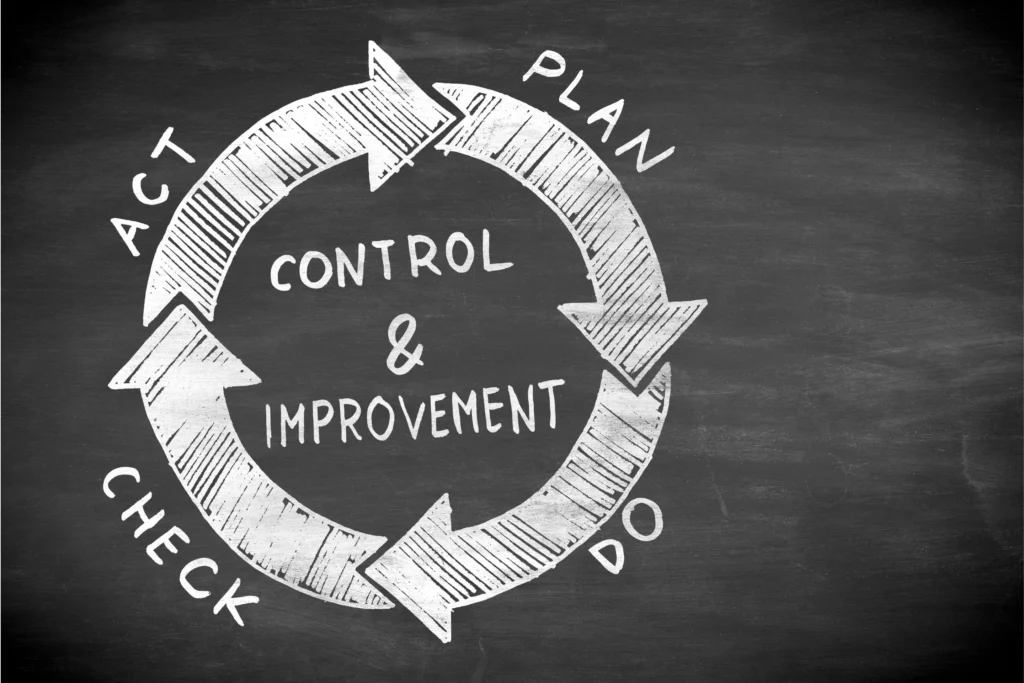INTRODUCTION FOR CONTROL PLAN – 1ST EDITION 2024
The Control Plan is a key document used in the manufacturing and quality management process to ensure that products and processes meet required specifications and standards. The 1st Edition of the Control Plan (2024) represents an updated approach in managing product quality control. This version of the Control Plan is aligned with current industry best practices, including IATF 16949 and other relevant standards. It ensures a more comprehensive, systematic method for monitoring and controlling manufacturing processes, addressing not just product specifications, but process stability, capabilities, and continuous improvement. The Control Plan – 1st Edition 2024 highlights the importance of establishing, maintaining, and improving controls to ensure that products are consistently produced to meet customer expectations. It provides guidelines for identifying key characteristics, setting appropriate control methods, and defining monitoring parameters throughout the production process.
LEARNING OBJECTIVES
- Ensure Product Consistency: The primary goal of the Control Plan is to ensure that products are consistently produced with minimal variation from the defined specifications and quality requirements.
- Minimize Defects and Variations: By documenting the control methods and actions to be taken, the Control Plan helps to prevent variations and defects, thus maintaining product quality at every stage of the production process.
- Monitor Key Process Characteristics: The Control Plan identifies critical process parameters, such as key characteristics that must be controlled to ensure product quality. These parameters are continuously monitored during production.
- Establish Process Control Mechanisms: The plan specifies which process controls need to be implemented and monitored, ensuring that processes are operating within defined limits to produce quality products.
- Facilitate Problem Resolution: In the event of an issue, the Control Plan includes predefined actions and solutions to address problems, helping prevent recurrence and reducing downtime.
- Ensure Continuous Improvement: By regularly reviewing the Control Plan and analyzing data from production, manufacturers can continuously improve processes, identify trends, and enhance overall product quality.
- Compliance with Industry Standards: The updated Control Plan is designed to align with the latest standards, including IATF 16949 and ISO 9001, ensuring compliance and providing an audit trail for quality control activities.
BENEFITS
- Improved Product Quality: By thoroughly defining control mechanisms for key process parameters, the updated Control Plan helps to reduce product defects and deviations, ensuring higher quality and reliability.
- Enhanced Process Stability: It ensures that manufacturing processes are stable and predictable by monitoring critical factors such as machine settings, environmental conditions, and raw material quality.
- Increased Efficiency: Well-defined control parameters help prevent process disruptions and downtime, leading to more efficient production operations.
- Reduced Costs: Proactive monitoring and defect prevention result in fewer reworks, scrap, and warranty claims, which in turn reduces overall production costs.
- Improved Customer Satisfaction: Consistent, high-quality products lead to increased customer satisfaction, better product reliability, and stronger customer relationships.
- Compliance with Quality Standards: By adhering to the new Control Plan framework, companies can ensure compliance with updated industry standards, such as IATF 16949, and pass internal and external audits with greater ease.
- Better Risk Management: The plan provides a structured approach to risk assessment and mitigation, addressing potential failures before they affect product quality or production timelines.
- Supports Continuous Improvement: With data-driven feedback and clear documentation of process controls, the Control Plan becomes a tool for ongoing process optimization and quality enhancement.
WHO SHOULD ATTEND
The Control Plan training is designed for a broad audience within manufacturing and quality management roles.
TRAINING METHODOLOGY
Face to Face lecture, Pre-Post Test Evaluation, Quizzes, Presentation, Case Study, MCQ etc.
DURATION
This is a 1-day course running from 9.00 am to 5.00 pm.
COURSE CONTENT
DAY 1
09.00 am – 09.30 am : Opening and introduction (Trainer & Participants)
09.30 am – 09.45 am : Introduction to Control Plan, Type and Requirements
09.45 am – 10.30 am : Control Plan
- Purpose of CP
- Support to Product Quality Planning Cycle
- Control Plan through the product life cycle
- Control Plan in Overall Quality Process
10.30 am – 10.45 am : Morning Tea Break
10.45 am – 12.00 pm
Module 1 :
- 1.1 Control Plan Format
- 1.2 Special Characteristics
- 1.3 Pass Through Characteristics
- 1.4 Error Proof Confirmation
- 1.5 Families of Control Plan
- 1.6 Independent Process and or Control Plan
- 1.7 Rework & Repair Process
- 1.8 Reaction Plan Details
- 1.9 100% Visual Inspection
- 1.10 Black Box Process
- 1.11 Non-Designed Responsible Organization
- 1.12 Directed Supply
- 1.13 Use of Software to Develop and Manage Control Plan
12.00 pm – 01.00 pm : Lunch
01.00 pm – 01.30 pm : Assignment/Class Exercise 1
01.30 pm – 03.00 pm
Module 2: Control Plan Development
- 2.1 Timing between APQP/CP
- 2.2 Inputs
- 2.3 Outputs
- 2.4 Form Fields
- 2.5 Class Discussion
Module 3 : Control Plan Phases
- 3.1 Prototype Control Plan
- 3.2 Pre-Launch Control Plan
- 3.3 Production Control Plan
- 3.4 Class Exercise/Discussion
03.00 pm – 03.15 pm : Afternoon Tea Break
03.15 pm – 04.45 pm
Module 4: Effective Use of Control Plan
- 4.1 Reverse FMEA
- 4.2 Using Software to develop and Manage Control Plan
- 4.3 Layered Process audit and Control Plan verifications
- 4.4 Control Plan for Highly Automated Process
- 4.5 Using Family and Foundation of FMEAs
- 4.6 Control of Storage and Handling Related Risk
- 4.7 Abnormality Management in relation to control plan
- 4.8 Class Exercise
Module 5 : Control Plan and Appendix
- 5.1 Appendix A Control Plan Example
- 5.2 Appendix B Forms and Check sheet
- 5.3 Organizational Issues and Discussion on control plan application
04.45 pm – 05.00 pm : Wrap Up Post Evaluation


